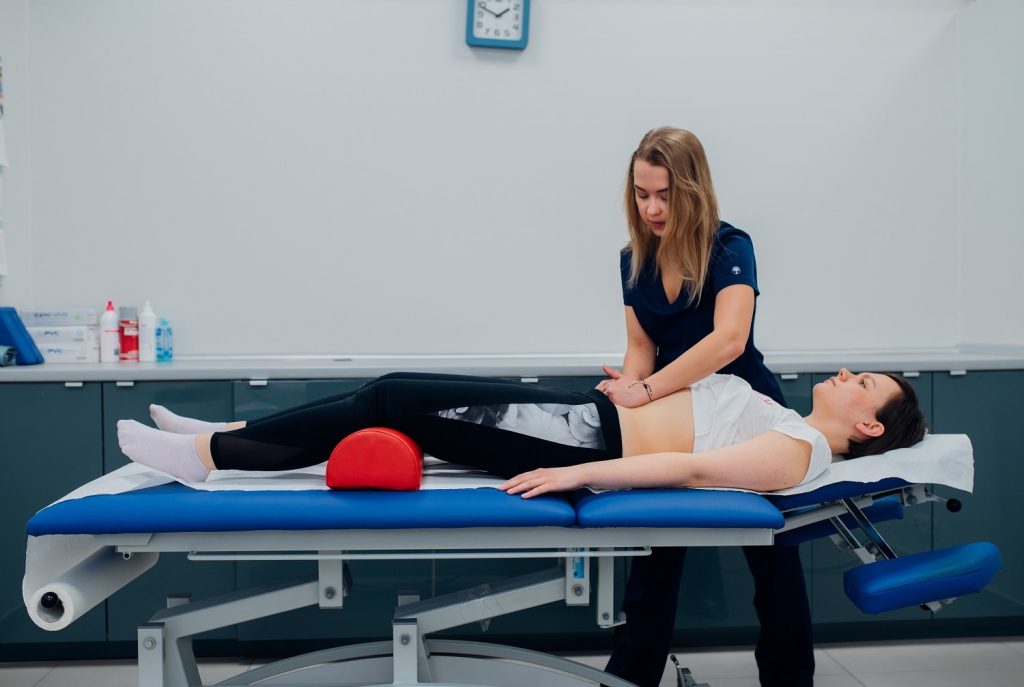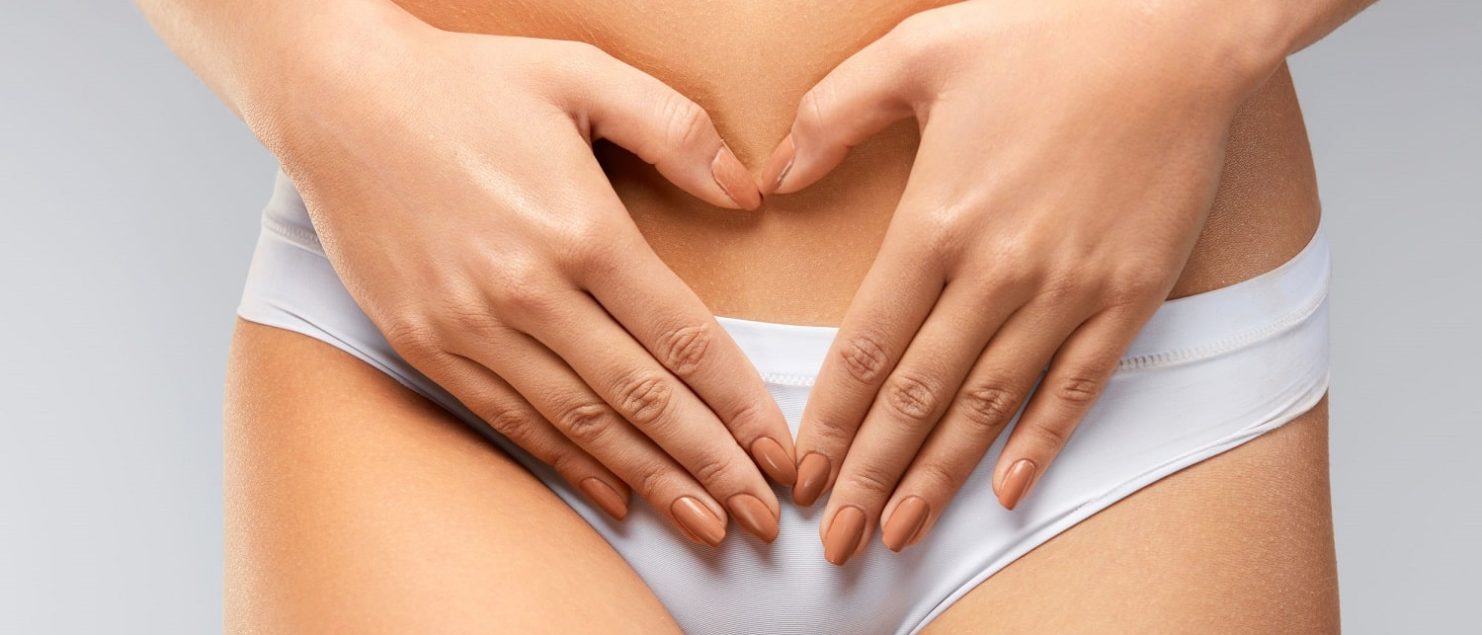Obniżenie narządu rodnego
Obniżenie narządu rodnego (descensus genitalis) to zmiana ułożenia macicy oraz pochwy w wyniku rozciągnięcia mięśni, ale nie tylko! To także obniżenie dróg moczowych, jelita cienkiego czy odbytnicy oraz dysfunkcje seksualne. Nie zawsze wszystkie wymienione zmiany występują jednocześnie, czasem nawet możesz ich nie zauważyć lub podejrzewać inne schorzenia. Z tego powodu warto dowiedzieć się więcej na jego temat, zasięgnąć porady specjalisty i uzyskać pomoc, bo nie każda zmiana tego typu wymaga przeprowadzenia operacji plastycznej.
O problem obniżenia narządu rodnego spytaliśmy mgr Natalię Stopę-Harasiuk – terapeutkę uroginekologiczną, akredytowaną przez Polskie Towarzystwo Uroginekologiczne.
Przyczyny obniżenia się narządu rodnego
Jest wiele czynników wpływających na zaburzenia statyki narządu rodnego. Do najczęstszych przyczyn powodujących te nieprawidłowości anatomiczne zalicza się uszkodzenia struktur mięśniowo-powięziowo-nerwowych w obrębie miednicy mniejszej. Te uszkodzenia mogą być następstwem uszkodzeń mechanicznych, takich jak: poród, ale również operacje w obrębie dna miednicy. Obniżenia powodować mogą także procesy starzenia się organizmu, spowodowane niedoborem hormonów (estrogenów, androgenów), co skutkuje zaburzeniami struktury oraz funkcji białek odpowiedzialnych za wytrzymałość mechaniczną tkanek dna miednicy.
Do obniżania narządu rodnego możesz mieć zwyczajnie predyspozycje. Sprzyjać mu może specyficzna anatomia, wrodzone zaburzenia syntezy kolagenu oraz czynniki promujące: przewlekły kaszel, otyłość, wykonywanie ciężkiej pracy fizycznej obecnie lub w przeszłości. Według dostępnych danych epidemiologicznych 50 % wieloródek ma zaburzenia statyki narządu rodnego, jednak interwencji chirurgicznej wymaga jedynie 10 %.
Objawy zaburzeń statyki w obrębie dna miednicy mniejszej
Jednym z najbardziej dokuczliwych objawów obniżenia narządu rodnego jest dyskomfort podczas oddawania moczu: częstomocz, parcia naglące, uczucie niepełnego opróżnienia pęcherza, trudności w rozpoczęciu oddawania moczu.
Równie uciążliwe są zaburzenia defekacji: zaparcia, uczucie niepełnego wypróżnienia, dyskomfort w trakcie defekacji, uczucie parcia na stolec.
Pozostałe objawy zgłaszane przez pacjentki to: uczucie ciężkości, dolegliwości bólowe w okolicy podbrzusza, krocza lub w odcinku krzyżowym kręgosłupa, dyskomfort w obrębie jamy brzusznej, wyczuwalnego kulistego ciała obcego w pochwie. To również mogą być następstwa obniżenia narządu rodnego, których możesz nawet nie łączyć z tym problemem.
Jakie są rodzaje obniżenia narządu rodnego
Ze względu na stopień obniżenia, wyróżniamy:
I stopień – część przodująca obniżenia nie przekracza przedsionka pochwy
II stopień – obniżenie macicy lub pochwy dochodzi do przedsionka pochwy
III stopień – część przodująca obniżenia przekracza przedsionek pochwy i uwidacznia się na zewnątrz (częściowe lub całkowite wypadanie narządu rodnego)
Ze względu na rodzaj defektu, rozróżniamy:
- urethrocele – uszkodzenie struktur więzadłowych podtrzymujących cewkę moczową
- cystocele – uszkodzenie powięzi pęcherzowo-pochwowej
- enterocele – to uszkodzenie więzadeł krzyżowo-macicznych
- rektocele – to uszkodzenie powięzi odbytniczo-pochwowej
- oprócz powyższych, defekty to również obniżenie macicy oraz pochwy
Zaburzenia statyki narządu rodnego wymagają specjalistycznej diagnostyki oraz odpowiedniego podejścia terapeutycznego. Świadomość zdrowotna oraz chęć do zachowania odpowiedniej jakości życia kobiet wzrasta, stąd coraz więcej Pań, które zmagają się z powyższym problemem szuka pomocy specjalistycznej. W tym przypadku postawienie właściwej diagnozy wymaga poznania dokładnego powodu danej dysfunkcji, dlatego badanie oraz terapię przeprowadza specjalista fizjoterapii uroginekologicznej.
Jest to dziedzina, której głównym zadaniem jest przywrócenie prawidłowych napięć, szczególnie w obszarze miednicy. A cały proces powinien opierać się na założeniu, iż miednica kobiety składa się z wzajemnie powiązanych ze sobą struktur oraz, że istnieje ścisły związek pomiędzy jej budową a funkcją.

Obniżenie narządu rodnego – leczenie
Najważniejsze jest właściwe rozpoznanie rodzaju i stopnia zaawansowania choroby. W drugiej kolejności brany pod uwagę jest wiek pacjentki. W przypadku obniżeń I oraz II stopnia (IIa) zaleca się leczenie zachowawcze polegające na terapii pessarami oraz terapii u fizjoterapeuty uroginekologicznego. Kluczowe w leczeniu jest wprowadzenie ćwiczeń dna miednicy oraz edukacja na temat zmiany nawyków dnia codziennego.
U pacjentek postmenopauzalnych stosuje się miejscową estrogenoterapię. W przypadku występowania parć naglących, wskazane jest kondycjonowanie pęcherza, ćwiczenia dna miednicy.
Gdy leczenie zachowawcze nie jest możliwe, w zależności od stopnia nasilenia obniżenia narządu rodnego, pęcherza lub odbytnicy, stosuje się odpowiednio dobrane metody operacyjne. Operacje wykonuje się z dostępu pochwowego, laparoskopowego lub brzusznego.
Po przebytej operacji warto skorzystać z konsultacji fizjoterapeutycznej pooperacyjnej. Podstawą prawidłowej rekonwalescencji jest edukacja pacjentki, jak nie angażować tłoczni brzusznej, jak wykonywać czynności dnia codziennego, w sposób nieobciążający mięśni dna miednicy w celu nauki aktywacji tych mięśni.
Źródło:
- Intersdyscyplinarne wytyczne Polskiego Towarzystwa Uroginekologicznego odnośnie diagnostyki i leczenia obniżenia narządów miednicy mniejszej; https://ptug.pl/
- Interdyscyplinarne wytyczne Polskiego Towarzystwa Uroginekologicznego odnośnie postępowania fizjoterapeutycznego w zaburzeniach funkcjonalnych narządów miednicy mniejszej; https://ptug.pl/
- Etiologia i czynniki ryzyka zaburzeń statyki kobiecego narządu rodnego oraz nietrzymania moczu Curr Gynecol Oncol 2019, 17(2), p. 69–77
- Czynniki ryzyka defektów dna miednicy u kobiet zakwalifikowanych do operacji rekonstrukcyjnych – polskie badanie wieloośrodkowe; Ginekol. Pol. 2010, 81, 821-827

